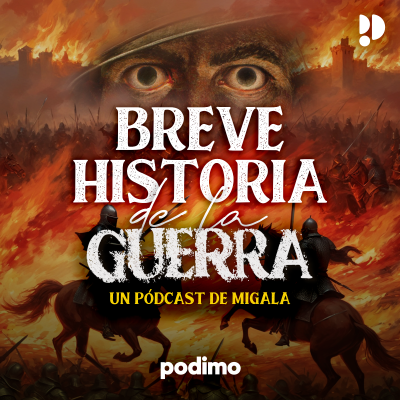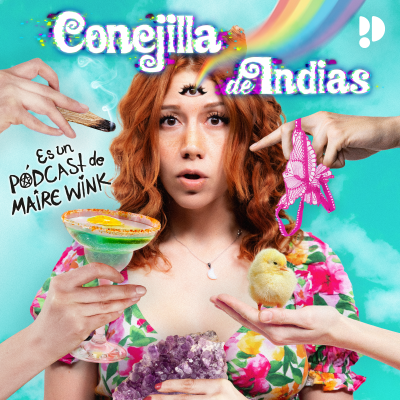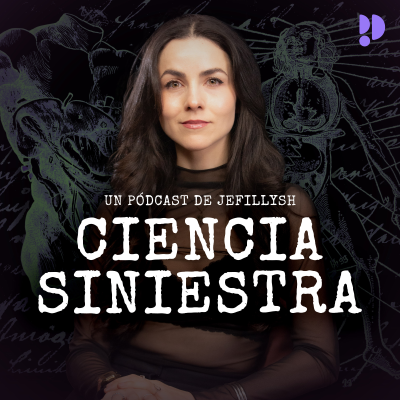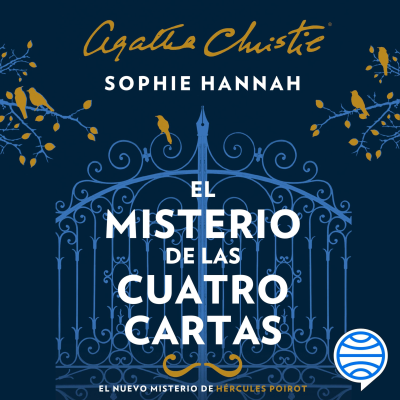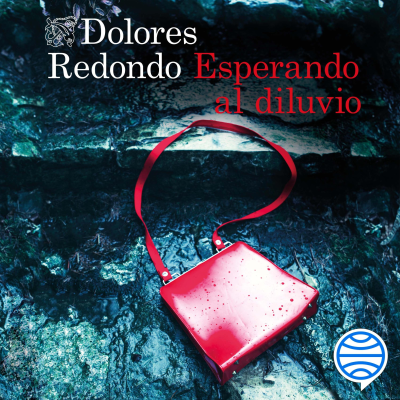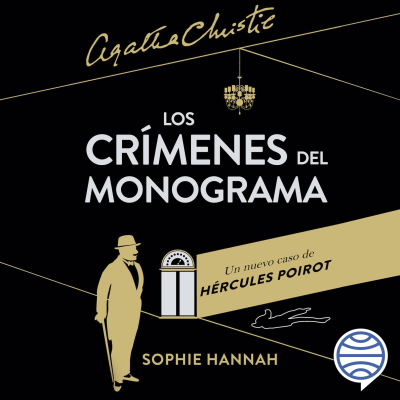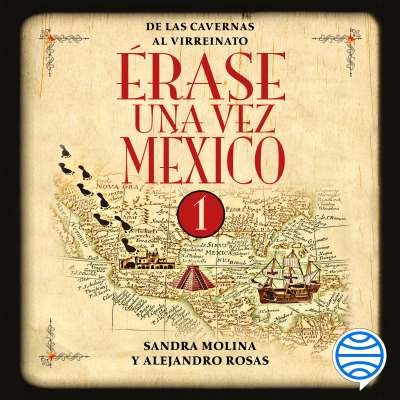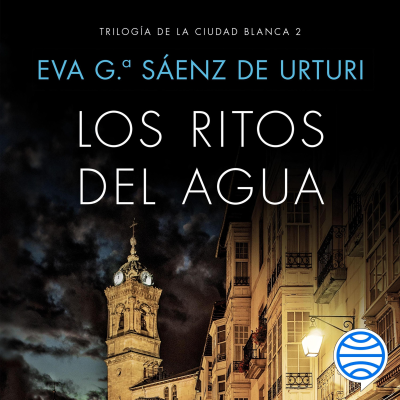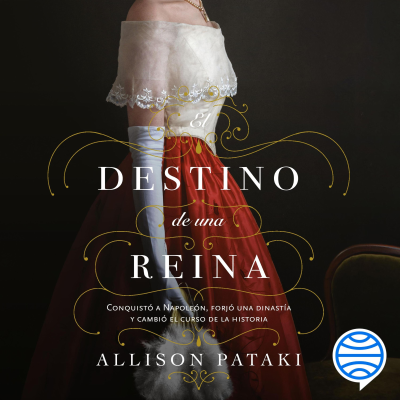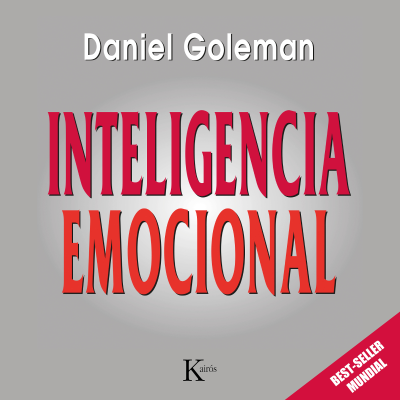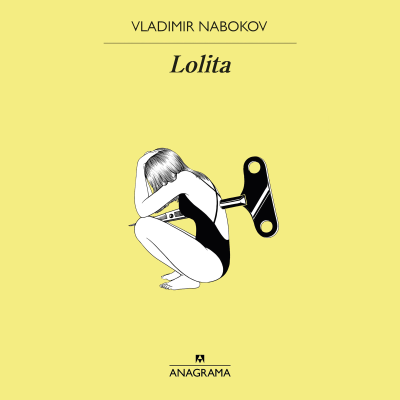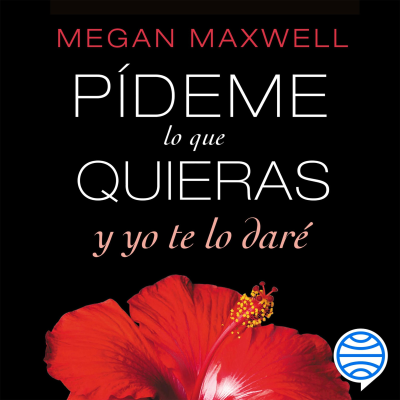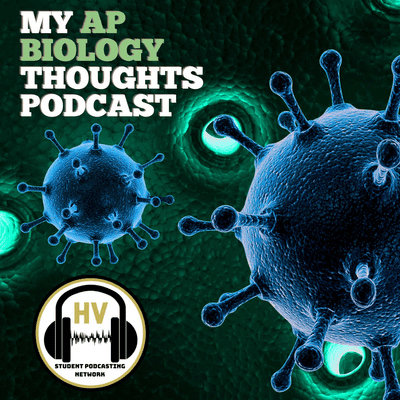
My AP Biology Thoughts
Podcast de Hopewell Valley Student Publications Network
The AP Biology Thoughts podcast is created by students for AP Biology students. At the end of each unit, students select topics to define, provide examples, and to make deeper connections to other units and the course.
Empieza 7 días de prueba
$99.00 / mes después de la prueba.Cancela cuando quieras.
Todos los episodios
130 episodiosMy AP Biology Thoughts Unit #: 8- Disruptions to Ecosystems --------------------------------------------------------------------------------------------------------------------------------------------------- EPISODE TITLE: SINGLE USE PLASTICS Jaiden: Welcome to My AP Biology Thoughts podcast, our names are Jaiden, Adam, and Reena and we are your hosts for this episode called Unit 8, Human Stupidity and Single Use Plastics. Today we will be discussing how single use plastics cause disruptions to the ecosystem and how it relates to the AP Biology Curriculum. The Podcast will be broken up into three segments. The first segment will show the general overview of single-use plastics and the second segment will show how these plastics impact the environment and why it relates to the AP Biology Curriculum. Finally, segment three will discuss how we can contribute and reduce single use plastics. Segment 1: Overview of Topic * Plastic pollution has become one of the most pressing environmental issues * According to the Environmental Protection Agency, Americans generated 35.7 million tons of plastic in the United States. * Single use plastics are plastics that are used for a brief period of time, before they are thrown away. These include plastic straws, spoons, bottles, and bags * Microplastics are extremely small pieces of plastic debris. They are generally about five millimeters, or approximately the diameter an eraser on a #2 pencils, in length to be considered microplastics Segment 2: Just how much harm is plastic causing * Some plastics such as Chlorinated plastics is harmful for the soil around it along with water sources making it harder for organisms to grow * It takes 1,000 years for a plastic bag to degrade in a landfill. However, the plastic does not degrade completely but instead becomes microplastics that absorb toxins and continue to pollute the environment. * An estimated 13 million plastic tons are thrown into the ocean each * These small plastic particles may harm our health once they have entered our bodies. Plastic products contain chemical additives. A number of these chemicals have been associated with serious health problems such as hormone-related cancers, infertility and neurodevelopmental disorders like ADHD and autism. * There are now 5.25 trillion macro and micro pieces, weighing up to 269,000 tonnes. This is because every day, around 8 million pieces of plastic make their way into our oceans. * Unlike some other kinds of waste, plastic doesn't decompose. That means plastic can stick around indefinitely, wreaking havoc on marine ecosystems. Some plastics float once they enter the ocean, though not all do. * Thousands of seabirds and sea turtles, seals and other marine mammals are killed each year after ingesting plastic or getting entangled in it. Endangered wildlife like Hawaiian monk seals and Pacific loggerhead sea turtles are among nearly 700 species that eat and get caught in plastic litter. Segment 2: Connection to the Course * This is related to fitness and the survival rate of organisms since the plastic decreases the survival rate of most organisms. * This also connects to ecosystems and how plastic interrupts them by harming members of the ecosystem. * The harm of organisms can impact the biodiversity of an organism which is our current unit. * Climate change reduces the biodiversity of an ecosystem by causing some animals, who can’t adapt to the changing temperatures to become extinct, impacting the entire food web. Segment 3: Plastic bag debate * The debate on manufacturing of plastic bags. The current plastic bag has 75% less plastic than it did 20 years ago largely due to climate concerns. However this makes the plastic bags less durable and unlike 20 years ago plastic bags are no longer able to be reused. According to the federal government 2/3rds of the plastic bags from grocery stores are being used. So would it be better to produce plastic bags with more plastic in order for them to be reused or try to minimize the plastic needed for the bags to function. * Plastic bags banned in New Jersey (May 4th 2022) * Most plastic waste into the ocean isn’t caused by just the United States. An estimated 80% of ocean plastic waste is caused by Asia from their rapid urbanization. This can cause plastic waste to be related to foreign policy and how other countries can influence the environmental impact of other nations. The United States is the next biggest culprit but has improved in recent years. * Alternate solutions. Examples include: Reusable bags, paper/polylactic acid (these two are biggest alternative material), community service. Reena: Thank you for listening to this episode of My AP Biology Thoughts. For more student-ran podcasts and digital content, make sure that you visit www.hvspn.com [http://www.hvspn.com]. Remember: Do something drastic and cut the plastc! Don’t forget to Subscribe to our Podcast and our YouTube [https://www.youtube.com/channel/UC07e_nBHLyc_nyvjF6z-DVg] channel along with Connect with us on Twitter (@thehvspn) --------------------------------------------------------------------------------------------------------------------------------------------------- Sources: Link 1 [https://recyclecoach.com/resources/7-revealing-plastic-waste-statistics-2021/#:~:text=According%20to%20the%20Environmental%20Protection,total%20municipal%20solid%20waste%20generated], Link 2 [https://www.biologicaldiversity.org/programs/population_and_sustainability/sustainability/plastic_bag_facts.html#:~:text=It%20takes%201%2C000%20years%20for,continue%20to%20pollute%20the%20environment], Link 3 [https://www.condorferries.co.uk/plastic-in-the-ocean-statistics#:~:text=There%20is%20now%205.25%20trillion,their%20way%20into%20our%20oceans], Link 4 [https://www.plastichealthcoalition.org/#:~:text=These%20small%20plastic%20particles%20may,disorders%20like%20ADHD%20and%20autism], Link 5 [https://oceanservice.noaa.gov/hazards/marinedebris/plastics-in-the-ocean.html#:~:text=Unlike%20some%20other%20kinds%20of,into%20tiny%20pieces%2C%20called%20microplastics], Link 6 [https://www.biologicaldiversity.org/campaigns/ocean_plastics/#:~:text=Thousands%20of%20seabirds%20and%20sea,get%20caught%20in%20plastic%20litter], Link 7 [https://www.plastics.org.nz/images/documents/PDFs/PNZ_Plastic_Bags_Info.pdf]. Link 8 [https://oceanservice.noaa.gov/facts/microplastics.html]. Link 9 [https://anchor.fm/bethesda-green/episodes/Microplastics-es6n5o] Music Credits: (either stated at end of video or written) * "Ice Flow" Kevin MacLeod (incompetech.com) * Licensed under Creative Commons: By Attribution 4.0 License * http://creativecommons.org/licenses/by/4.0/ Subscribe to our Podcast Apple Podcasts [https://podcasts.apple.com/us/podcast/my-ap-biology-thoughts/id1549942575] Spotify [https://open.spotify.com/show/1nH8Ft9c9f6dmo75V9imCk] Google Podcasts [https://podcasts.google.com/search/my%20ap%20biology%20thoughts] YouTube [https://www.youtube.com/channel/UC07e_nBHLyc_nyvjF6z-DVg] Connect with us on Social Media Twitter https://twitter.com/thehvspn@thehvspn [https://twitter.com/thehvspn]
My AP Biology Thoughts Unit #: 8 EPISODE TITLE: Welcome to My AP Biology Thoughts podcast, our names are Ramit Dasika, Flavio D’Attilio, Samy Leroux, Landon Schafer, Colin Fahmy and we are hosting this episode called Unit 8 Ecology AND Today we will be discussing The war between Ukraine and Russia has caused mass destruction to many ecosystems through bombings and other weaponry and how it relates to the AP Biology Curriculum. Segment 1: Overview of Topic * War * The war between Ukraine and Russia has caused mass destruction to many ecosystems through bombings and other weaponry * Segment 2: Evidence that supports * It causes forest fires- Samy * During the process of runoff, the harmful chemicals are collected in rivers nearby. This causes the water sources contaminated due to chemical leakage from destroyed industrial plants-Ramit * During the Russia-Ukrainian War, the Russian soldiers damaged and looted fire engines, computers, and radiation monitoring equipment, while leaving mines and munitions spread across the exclusion zone.-Flavio * “In the Donbas region, wrecked sewage works gush their contents into rivers and damaged pipelines fill wetlands with oil.”- Landon * “Most of the exclusion zone was damaged by the invasion and may be contaminated with unexploded ordnance and mines,” according to Oleksandr Galushchenko, director of the biosphere reserve. The larger mammals that constantly move around the reserve – wolves, deer, brown bears, lynx, elk, and recently reintroduced bison – are at particular risk, he says.”-Samy * “The forests in the zone remain a radioactive tinderbox that, in the event of fires, could send radioactive isotopes on the winds towards Kyiv. The risks of that happening are now much greater, says the UNCG’s forest campaigner Yehor Hrynyk. With fire-fighting equipment looted and much of the exclusion zone dangerous for firefighters to enter, some 65,000 acres [https://uncg.org.ua/en/news-from-ukrainian-forests-issue-2-08-08-2022/] has burned since the invasion, and fires continue to smolder in underground peat.”-Colin * “Many industrial plants are damaged or abandoned;wrecked sewage works gush their contents into rivers; damaged pipelines are filling wetlands with oil; and toxic military scrap [https://wwfcee.org/news/assessing-the-environmental-impacts-of-the-war-in-ukraine] is spread across the land.”- Flavio * “A particular concern is the many coal mines abandoned after 2014. With pumping of water halted, they have so far released some 650,000 acre-feet of polluted mine water into the environment, according to Serhii Ivaniuta of the National Institute for Strategic Studies in Kyiv.”- Landon * Russian bombardment of a steel plant could have released tens of thousands of tons of hydrogen 5sulfide into the Sea of Azov.- Samy * As a result of the damage from the war, Environmentalists say that in looking to recovery, the Ukrainian government is prioritizing big projects over natural restoration. The government is looking for maintaining power in the government and becoming a global leader. The nations are forgetting about the ecological damage.- Ramit Segment 3: Connection to the Course * Pollution in the environment could cause microorganisms to die, which could subsequently cause a trophic cascade in which producers die off causing other higher tr213ophic levels to drop in population as well.- Flavio * Nuclear power plants being targeted; can cause climate change which kills ectotherms * “The biodiversity is being drastically affected due to intense deforestation and habitat destruction with potential implications for wildlife.”- Landon * “The ecosystem services supplied will likely be strongly damaged since deforestation will decrease the capacity of the ecosystems to regulate air pollution or climate. Soil degradation will hamper food production, and landscape aesthetics, cultural heritage and social cohesion destruction drastically affects cultural services.”- Colin * https://time.com/6222865/ukraine-environmental-damage-russia/ [https://time.com/6222865/ukraine-environmental-damage-russia/] https://e360.yale.edu/features/ukraine-russia-war-environmental-impact#:~:text=Early%20on%2C%20Russia%20invaded%20the,the%20plant%20in%20recent%20weeks [https://e360.yale.edu/features/ukraine-russia-war-environmental-impact#:~:text=Early%20on%2C%20Russia%20invaded%20the,the%20plant%20in%20recent%20weeks]. Thank you for listening to this episode of My AP Biology Thoughts. For more student-ran podcasts and digital content, make sure that you visit www.hvspn.com [http://www.hvspn.com]. (Enter your closing Tag-line)! Music Credits: * "Ice Flow" Kevin MacLeod (incompetech.com) * Licensed under Creative Commons: By Attribution 4.0 License * http://creativecommons.org/licenses/by/4.0/ [http://creativecommons.org/licenses/by/4.0/] * Ice spice (That Landon a munch) Subscribe to our Podcast Apple Podcasts [https://podcasts.apple.com/us/podcast/my-ap-biology-thoughts/id1549942575] Spotify [https://open.spotify.com/show/1nH8Ft9c9f6dmo75V9imCk] Google Podcasts [https://podcasts.google.com/search/my%20ap%20biology%20thoughts] YouTube [https://www.youtube.com/channel/UC07e_nBHLyc_nyvjF6z-DVg] Connect with us on Social Media Twitter https://twitter.com/thehvspn@thehvspn [https://twitter.com/thehvspn]
MY AP BIOLOGY THOUGHTS UNIT 8 ECOLOGY EPISODE TITLE: THE ISLE OF WOLVES Welcome to My AP Biology Thoughts podcast, our names are Olivia, Anushka, Mea, and Hana and we are your hosts for the Unit 8 Ecology-the Isle Royale Study podcast. Today we will be discussing the Isle Royale Study and how it relates to the AP Biology Curriculum. SEGMENT 1: OVERVIEW OF THE ISLE ROYALE STUDY * Camping —> DOCTAH guise —-> isle royale —-> us listening to him talk :) SEGMENT 2: EVIDENCE THAT SUPPORTS THE ISLE ROYALE STUDY * Winter controls the ticks (kills them all if cold temperature) * Provide ex of trophic cascading * Predator prey talk abt it * Human interaction/interference (trails, being on/off) * Coloring of the wolves * Talk abt winter study (break island into quadrants and take populations #’s) SEGMENT 3: CONNECTION TO THE COURSE * Predator-prey relationship: * Trophic structure: a flow of energy between organisms in an ecosystem * Energy flow * Parasitic * Importance of genetic diversity Thank you for listening to this episode of My AP Biology Thoughts. For more student-ran podcasts and digital content, make sure that you visit www.hvspn.com [http://www.hvspn.com]. MUSIC CREDITS: * "Ice Flow" Kevin MacLeod (incompetech.com) * Licensed under Creative Commons: By Attribution 4.0 License * http://creativecommons.org/licenses/by/4.0/ SUBSCRIBE TO OUR PODCAST Apple Podcasts [https://podcasts.apple.com/us/podcast/my-ap-biology-thoughts/id1549942575] Spotify [https://open.spotify.com/show/1nH8Ft9c9f6dmo75V9imCk] Google Podcasts [https://podcasts.google.com/search/my%20ap%20biology%20thoughts] YouTube [https://www.youtube.com/channel/UC07e_nBHLyc_nyvjF6z-DVg] CONNECT WITH US ON SOCIAL MEDIA Twitter @thehvspn [https://twitter.com/thehvspn]
MY AP BIOLOGY THOUGHTS UNIT 8 ECOLOGY EPISODE TITLE: CONSERVATION OF BEES Welcome to My AP Biology Thoughts podcast, my name is Alex, here with Raelynn and Samiyah and we are your hosts for today’s episode, coming from Unit 8 - our Ecology unit. Today we will be discussing bee conservation. WHY ARE BEES IMPORTANT TO THE ENVIRONMENT? * According to the US Department of Agriculture: “One out of every three bites of food in the United States depends on honey bees and other pollinators. Honey bees pollinate $15 billion worth of crops each year, including more than 130 fruits and vegetables. Managed honey bees are important to American agriculture because they pollinate a wide variety of crops, contributing to food diversity, security and profitability.” * Pollinators - support plant populations * Food crops as well as wild plants WHY ARE BEE POPULATIONS DECLINING? * “Declines in bumble bee species in the past 60 years are well documented in Europe, where they are driven primarily by habitat loss and declines in floral abundance and diversity resulting from agricultural intensification.” (According to researchers from the University of Stirling) * loss of habitats because of farming + urbanization * Habitat fragmentation can impact surviving populations through genetic isolation (which causes inbreeding and makes population less genetically diverse, making them more susceptible to diseases) * University of London (an issue of Apidologie): habitat loss is the “most universal and high impact factor driving bee declines.” https://www.ehn.org/monoculture-farming-is-not-good-for-the-bees-study-2639154525.html [https://www.ehn.org/monoculture-farming-is-not-good-for-the-bees-study-2639154525.html] https://abcnews.go.com/International/monoculture-farming-modern-day-agriculture-killing-bees-scientists/story?id=80536659 [https://abcnews.go.com/International/monoculture-farming-modern-day-agriculture-killing-bees-scientists/story?id=80536659] * Climate Change * University of London (an issue of Apidologie): Change in temperature and weather patterns due to climate change can significantly impact bee populations * Additionally, loss of habitat due to rising sea levels can also cause negative impacts * stats [https://www.businessinsider.com/insects-dying-off-sign-of-6th-mass-extinction-2019-2] * University of Maryland [https://www.eurekalert.org/news-releases/612063]: October 2018 - April 2019: 40% of honey bee colonies in US died * Many other insect populations in decline, evidence of a possible 6th mass extinction (“biological annihilation [https://www.businessinsider.com/biological-annihilation-sixth-mass-extinction-2017-7]”) * Pesticide use massively impacting bee populations and reproductive rates * 44% fewer offspring in bee populations affected by pesticides in both youth and adulthood, according to scientists at the University of California * These pesticides (neonicotinoids), while banned in many wealthier countries, are still used in and exported to low and middle income countries * Varroa mite * Colony Collapse Disorder BEE CONSERVATION ATTEMPTS: * Researcher [https://www.greatoldbroads.org/wp-content/uploads/formidable/44/Winfree-2010.pdf] Winfree from Rutgers University * Formal protection of threatened species - according to data an approximated 95,000 insects in general are in risk of extinction, however only 771 have been evaluated for candidacy on the global Red List. No bee species is listed under the US Endangered Species Act, even though many species are known to be rare and declining at a steep rate. An important step for the conservation of bees requires them to be identified as organisms that require protection * The National Resources Conservation Service, an agency that operates under the United States’ Department of Agriculture, has begun working with “agricultural producers to combat future declines by helping them to implement conservation practices that provide forage for honey bees while enhancing habitat for other pollinators and wildlife and improving the quality of water, air and soil.” * Some of these measures include planting cover crops, wildflowers, and native grasses, along with improving management of grazing lands. * University of Nevada [https://www.usda.gov/media/blog/2016/06/24/reversing-pollinator-decline-key-feeding-future]: researchers identified a disease (American foulbrood (AFB)) that affects honeybees. In order to protect the bees, researchers have found a virus that attacks the disease and have successfully lowered AFB levels. CONNECTION TO THE COURSE: * Trophic cascades - no bees = plant species dying off * Keystone species * Harder to farm reliably without pollinators Thank you for listening to this episode of My AP Biology Thoughts. For more student-ran podcasts and digital content, make sure that you visit www.hvspn.com [http://www.hvspn.com]! MUSIC CREDITS: * "Ice Flow" Kevin MacLeod (incompetech.com) * Licensed under Creative Commons: By Attribution 4.0 License * http://creativecommons.org/licenses/by/4.0/ SUBSCRIBE TO OUR PODCAST Apple Podcasts [https://podcasts.apple.com/us/podcast/my-ap-biology-thoughts/id1549942575] Spotify [https://open.spotify.com/show/1nH8Ft9c9f6dmo75V9imCk] Google Podcasts [https://podcasts.google.com/search/my%20ap%20biology%20thoughts] YouTube [https://www.youtube.com/channel/UC07e_nBHLyc_nyvjF6z-DVg] CONNECT WITH US ON SOCIAL MEDIA Twitter @thehvspn [https://twitter.com/thehvspn] SOURCES: Bees. National Wildlife Federation. (n.d.). Retrieved December 8, 2021, from https://www.nwf.org/Educational-Resources/Wildlife-Guide/Invertebrates/Bees. Brown, M. J. F., & Paxton, R. J. (n.d.). The conservation of bees: A global perspective - Apidologie. SpringerLink. Retrieved December 8, 2021, from https://link.springer.com/article/10.1051/apido/2009019. Goulson, D., Lye, G. C., & Darvill, B. (2008). Decline and conservation of Bumble Bees. Annual Review of Entomology, 53(1), 191–208. https://doi.org/10.1146/annurev.ento.53.103106.093454 Guardian News and Media. (2021, November 18). Bee-harming pesticides exported from EU despite ban on outdoor use. The Guardian. Retrieved December 8, 2021, from https://www.theguardian.com/environment/2021/nov/18/bee-harming-pesticides-exported-from-eu-after-ban-on-outdoor-use. Kate Baggaley | Published Nov 23, bees pesticides Pollinators Science, Bees, Pesticides, Pollinators, & Science. (2021, November 22). Pesticides leave a lasting mark on pollinating bees. Popular Science. Retrieved December 8, 2021, from https://www.popsci.com/science/bees-pesticide-fertility/. Ramaswamy, P. by D. S., & T, G. (2017, February 21). Reversing pollinator decline is key to feeding the future. USDA. Retrieved December 8, 2021, from https://www.usda.gov/media/blog/2016/06/24/reversing-pollinator-decline-key-feeding-future. UMDRightNow. (n.d.). US beekeepers lost over 40% of colonies last year, highest winter losses ever recorded. EurekAlert! Retrieved December 8, 2021, from https://www.eurekalert.org/news-releases/612063. Winfree, R. (n.d.). The conservation and restoration of wild bees. https://doi.org/10.1111/(issn)1749-6632 Woodward, A. (2019, June 21). Last year, 40% of honey-bee colonies in the US died. but bees aren't the only insects disappearing in unprecedented numbers. Business Insider. Retrieved December 8, 2021, from https://www.businessinsider.com/insects-dying-off-sign-of-6th-mass-extinction-2019-2.
MY AP BIOLOGY THOUGHTS UNIT 8 ECOLOGY EPISODE TITLE: BIRDS OF PARADISE MATING RITUALS Welcome to My AP Biology Thoughts podcast, my name is Xavier and I am with Celine and Sofie and we are your hosts for Unit 8 Ecology-Birds of Paradise Mating Rituals. Today we will be discussing Birds of Paradise Mating Rituals and how it relates to the AP Biology Curriculum. We want to thank our sources for the information presented in this podcast episode today which include National geographic and BBC Earth. You can find the citations and links to these sources in the show notes. SEGMENT 1: OVERVIEW OF BIRD * The birds of paradise are some of the most fascinating birds in the world, from their wide range of behaviors and striking coloration of the males, I would love to ask you some specific questions about them. I have looked over many different species and their behavior, but I am particularly interested in the elaborate mating displays performed by male birds of paradise. * Of course, let me begin with a bit of background on the species. Birds of paradise are members of the family Paradisaeidae (Para-dice-see-a-die), which researchers think evolved on the island of New Guinea. The family is comprised of 43 species, most found on the island of New Guinea. Two species are found only in the Moluccan Islands to the west of New Guinea, and four others are found mainly in northeastern Australia. The family of birds includes astrapias, manucodes, paradisaeas, parotias, riflebirds, and sicklebills. SEGMENT 2: EVIDENCE THAT SUPPORTS ANIMAL BEHAVIOR WITHIN THE BIRDS OF PARADISE * I know many species of birds are sexually dimorphic but what does this mean for the bird-of-paradise * Yes, this means the males and females have different appearances. So the males have elaborate feather patterns that they use in their mating displays while the females of these species have a more dull and camouflaged appearance * So while the females are watching the Males perform these displays what is their key concern when choosing which male to mate with? * The female choice appears to be based on the vigor of the males’ display meaning their physical strength and health. Which can be seen in the condition and color of his feathers. * So the female chooses a vigorous mate, ensuring that her offspring will also be relatively healthy. * Exactly, the strongest, most brightly-feathered males have a better chance of attracting the females, while less attractive males may be overlooked. * I was most interested in a species of male Superb bird-of-paradise with their dark black cape feathers and almost like a “psychedelic smiley face.” The way he snaps his tail rhythmically slowly, flashing a breastplate of iridescent like feathers. I’m sure the female’s prefer their beautiful feathers. * Like I had mentioned it really depends on what the female wants to pass on to her children. This is their key concern when mating. Impressive as it is, the male’s beauty is impractical. Excessively long tail feathers might be great for attracting mates, but they aren’t exactly useful for survival. In fact, it’s easy to see how they might be a hindrance. * So how did these features evolve seen as the males need them for mating but doesn’t survival play a role? * Well, when resources are plentiful and there are few predators, females don’t need the males to defend them, provide food, or help raise young. They can be picky when it comes to choosing a mate which leaves the males to work hard to impress the females. This is why sexual selection is so relevant in the bird-of-paradise SEGMENT 3: CONNECTION TO THE COURSE * Now you may be thinking to yourself, how does this relate to the AP Bio Curriculum * Well...the birds of paradise mating ritual is a great example of courtship behavior * This is a behavior that results in reproduction, and in this case specifically through the visual and auditory stimuli that birds provide to the females * This behavior is innate meaning the animals don’t need to learn it, it just comes through genetics * Tieing back to the evolution unit as well, the elaborate plumage of the males is thought to have evolved through the evolutionary process of sexual selection * Sexual selection can be shown by the females choosing mates on the basis of their desirable behavioral and anatomic traits, including color. After mating, the female returns to her nest and raises her offspring alone * Darwin’s theory of sexual selection suggests that traits can also evolve in a population if they improve an individual’s ability to attract more or better mates, even if those same traits are a detriment to survival in the long term. If natural selection explains evolution driven by the competition for survival, then sexual selection explains evolution driven by the competition for mates. * This island has very few natural predators paving way for a specific type of sexual selection known as “female choice” Thank you for listening to this episode of My AP Biology Thoughts. For more student-ran podcasts and digital content, make sure that you visit www.hvspn.com [http://www.hvspn.com]. SOURCE CREDITS: * https://www.nationalgeographic.org/article/birds-paradise-beauty-kings/12th-grade/ [https://www.nationalgeographic.org/article/birds-paradise-beauty-kings/8th-grade/] * https://www.youtube.com/watch?v=nWfyw51DQfU [https://www.youtube.com/watch?v=nWfyw51DQfU] MUSIC CREDITS: * "Ice Flow" Kevin MacLeod (incompetech.com) * Licensed under Creative Commons: By Attribution 4.0 License * http://creativecommons.org/licenses/by/4.0/ SUBSCRIBE TO OUR PODCAST Apple Podcasts [https://podcasts.apple.com/us/podcast/my-ap-biology-thoughts/id1549942575] Spotify [https://open.spotify.com/show/1nH8Ft9c9f6dmo75V9imCk] Google Podcasts [https://podcasts.google.com/search/my%20ap%20biology%20thoughts] YouTube [https://www.youtube.com/channel/UC07e_nBHLyc_nyvjF6z-DVg] Connect with us on Social Media Twitter @thehvspn [https://twitter.com/thehvspn]
Empieza 7 días de prueba
$99.00 / mes después de la prueba.Cancela cuando quieras.
Podcasts exclusivos
Sin anuncios
Podcast gratuitos
Audiolibros
20 horas / mes
